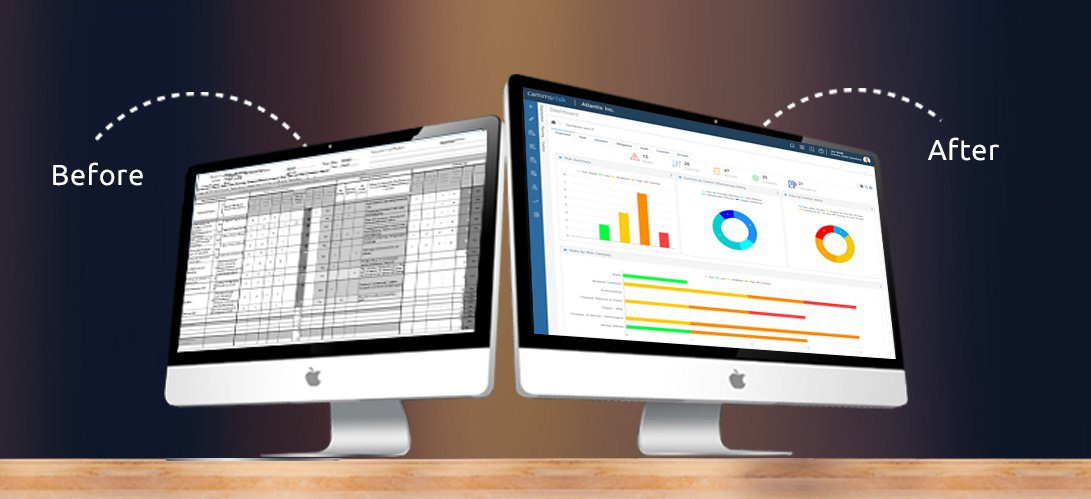Are you concerned about the restrictions imposed by running your risk management out of spreadsheets?
An ever- shifting and dynamic business environment means organisations are more challenged than ever to identify, assess, manage and report on risks through one or more spreadsheets.
Even before the impact of Covid -19, risk management through spreadsheets was proving to be more difficult to maintain, communicate and report on. Typically it has meant that risk managers and coordinators are tasked with manually updating risk registers and having to chase risk, control and treatment action owners to undertake reviews and provide progress updates. These in turn have to be written up and provided to management.
Agility and rapid response without compromising standards are attributes that are required by organisations if they are to succeed in today’s volatile environment. For risk management, this means moving risks and risk management out of spreadsheets and into current generation risk software which supports more rapid assessment and decision making in those areas of the business that are most at risk.
Some key benefits your enterprise can achieve by deploying current generation risk management software are:
- Easy web browser access to visual dashboards showing risk profile by risk categories as well as by organisation and planning structures.
- Automating risk and control review notifications as well as reminders on updating risk treatment action progress to those responsible.
- Flexible reporting options either on-screen or in software generated reports.
- 24/7 access for review, updating and reporting for those with risk management roles and responsibilities.
- Ability to show relationships between risks and to link key risk indicators (KRIs or KPIs) to respective risks.
- Opportunity to visually show residual risk ratings against the organisation’s risk appetite which assists in choosing the most appropriate risk treatment option
So how do best transition from a spreadsheet to today’s leading risk management software?
cammsrisk has been designed to deliver on ISO 31000 requirements whilst providing flexibility to capture the organisation’s risk framework settings and risk management process. The transition can be a one for one or an upscale to benefit from increased options the software provides such as bowtie analysis, risk appetite ratings and so on.
Ready to move beyond your spreadsheet risk management system? Request a live demo here.





